Grundlegendes Studium von OpenCV mit Python
Outline
- Erstellen einer Umgebung --Bildgenerierung --Bild laden
- Durchschnittswert der Bildfarbe --Die Pixel schwächen
- Trimmen
- Größe ändern --Zusatz --Affin-Konvertierung
- Invertiert
- Graustufenumwandlung --Verwenden Sie die Zeichenfunktion Kreis.
- Farbextraktion
- Ersetzen von Farbkanälen
- Alpha-Kanal-Betrieb * Unterwegs
Eine Umgebung schaffen
Ja, schon. Ich muss die Bildverarbeitung richtig studieren. .. !! Das wäre openCV! Wo ich dachte Es ist schwierig, eine Umgebung für das Spielen mit openCV einzurichten. Gewöhnliche Leute. Ich werde vorerst mit Python spielen. Die Zusammensetzung ist
- pyenv-virtualenv
- anaconda
- opencv
(Mac OSX Yosemite 10.10.5,Python 2.7.11,opencv 2.4.12)
ist. Ich bedauere, dass es diesmal nicht ist. .. Da in opencv2 in Python2.7 viele Informationen geschrieben sind, kann dies vorerst für das Lernen ausreichen. In meinem Fall wurde pyenv-virtualenv vor langer Zeit in Homebrew verwendet. Es tut mir leid, wenn Sie keine Versionsverwaltung benötigen. Erstellen Sie eine pyenv-virtualenv-Umgebung mit Homebrew auf dem Mac Vielleicht können Sie es tun, wenn Sie sich darauf beziehen.
Sobald die Pyenv-Umgebung erstellt ist Wechseln Sie in das Verzeichnis, das Sie studieren möchten
cd ~/study/st_opencv/
pyenv install anaconda-2.1.0
pyenv local anaconda-2.1.0
pyenv rehash
~~Nach der Installation
conda install -c https://conda.binstar.org/jjhelmus opencv
Dorya. Jetzt können Sie mit opencv spielen. Zu einfach Danke hier Der einfachste Weg, OpenCV mit Python zu verwenden
Bilderzeugung
import numpy as np
import cv2
r = 0
g = 0
b = 255
width = 480
height = 360
pixel = np.array([b,g,r],np.uint8)
wGrid = np.array([pixel]*width,np.uint8)
newImg = np.array([wGrid]*height,np.uint8)
cv2.imshow('generate img',newImg)
cv2.imwrite('createimg.png',newImg)
cv2.waitKey(0)

Bild wird geladen
# -*- coding: utf-8 -*-
import cv2, matplotlib
import numpy as np
import matplotlib.pyplot as plt
img = cv2.imread('sample.png')
cv2.imshow('result',img)
cv2.waitKey(0)

Erhalten Sie die durchschnittliche Farbe des Bildes
# -*- coding: utf-8 -*-
import cv2, matplotlib
import numpy as np
import matplotlib.pyplot as plt
img = cv2.imread('sample.png')
average_color_per_row = np.average(img, axis=0)
average_color = np.average(average_color_per_row, axis=0)
average_color = np.uint8(average_color)
average_color_img = np.array([[average_color]*500]*500, np.uint8)
cv2.imshow('average',average_color_img)
cv2.imwrite('avarage.png',average_color_img)
cv2.waitKey(0)

Passen Sie die Pixel an
# -*- coding: utf-8 -*-
import cv2, matplotlib
import numpy as np
import matplotlib.pyplot as plt
###
#Zugriff auf Pixel
###
cols = 640
rows = 480
#Bilderzeugung
image = cv2.imread('sample.png')
# print image
print image[0,1]
width = image.shape[0]
height = image.shape[1]
amount = 2.0
#Spielen Sie mit jedem Pixel.
for x in xrange(0,width):
for y in xrange(0,height):
pixel = image[x,y]
b = pixel[0]
g = pixel[1]
r = pixel[2]
if x < width/2 and y < height/2:
color = np.array([b,g,r*amount],np.uint8)
elif x > width/2 and y < height/2:
color = np.array([b,g*amount,r],np.uint8)
elif x < width/2 and y > height/2:
color = np.array([b*amount,g,r],np.uint8)
else:
color = np.array([b*amount,g*amount,r*amount],np.uint8)
image[x,y] = color
# image[x,y] = color
# image[0:150,0:110] = [0, 255, 128]
cv2.imshow('image',image)
cv2.imwrite('access_pixel.png',image)
cv2.waitKey(0)
![]()
Trimmen
# -*- coding: utf-8 -*-
import cv2, matplotlib
import numpy as np
import matplotlib.pyplot as plt
###
#Zugriff auf Pixel
###
#Bilderzeugung
image = cv2.imread('sample.png')
x = 200
y = 180
width = 150
height = 120
dstImg = image[y:y+height,x:x+width]
cv2.imshow('image',image)
cv2.imshow('dst',dstImg)
cv2.imwrite('trimming.png',dstImg)
cv2.waitKey(0)

Größe ändern
# -*- coding: utf-8 -*-
import cv2, matplotlib
import numpy as np
import matplotlib.pyplot as plt
###
#Zugriff auf Pixel
###
#Bilderzeugung
image = cv2.imread('sample.png')
width = image.shape[0]
height = image.shape[1]
resizeImg = cv2.resize(image,(height/2,width/2))
cv2.imshow('original',image )
cv2.imshow('resize',resizeImg)
cv2.imwrite('resize.png',resizeImg)
cv2.waitKey(0)

Hinzufügen
# -*- coding: utf-8 -*-
import cv2, matplotlib
import numpy as np
import matplotlib.pyplot as plt
###
#Zugriff auf Pixel
###
#Bilderzeugung
sample1 = cv2.imread('addsample1.png')
sample2 = cv2.imread('addsample2.png')
width = 300
height = 300
addImg = np.zeros((height,width,3),np.uint8)
for x in xrange(0,width):
for y in xrange(0,height):
addpixel = sample1[x,y] + sample2[x,y]
addImg[x,y] = addpixel
cv2.imshow('add',addImg)
cv2.imwrite('add.png',addImg)
cv2.waitKey(0)



Affin-Konvertierung
# -*- coding: utf-8 -*-
import cv2
import numpy as np
img = cv2.imread('sample.png')
# cv2.imshow('image',img)
width = img.shape[1]
height = img.shape[0]
center = tuple(np.array([width/2, height/2]))
size = tuple(np.array([width,height]))
#Eine Geldstrafe, die die Drehachse nicht angibt
#Der Winkel, den Sie drehen möchten
rad = 45*np.pi/180
movX = 10
movY = 10
matrix = [
[np.cos(rad),-1*np.sin(rad),movX],
[np.sin(rad),np.cos(rad),movY]
]
afMat = np.float32(matrix)
#Eine Geldstrafe, die die Rotationsachse angibt
angle = 45
scale = 1.0
rotMat = cv2.getRotationMatrix2D(center,angle,scale)
# afnImg = cv2.warpAffine(img,afMat,size,flags=cv2.INTER_LINEAR)
afnImg = cv2.warpAffine(img,rotMat,size,flags=cv2.INTER_CUBIC)
cv2.imshow('affine image',afnImg)
cv2.imwrite('affine.png',afnImg)
cv2.waitKey(0)
cv2.destroyAllWindows()

Umkehren
# -*- coding: utf-8 -*-
import cv2
import numpy as np
img = cv2.imread('sample.png')
rimg = img.copy()
fimg = img.copy()
rimg = cv2.flip(img,1)
fimg = cv2.flip(img,0)
cv2.imshow('Original',img)
cv2.imshow('Vertical',rimg)
cv2.imshow('Horizontal',fimg)
cv2.imwrite('flip-vertical.png',rimg)
cv2.imwrite('flip-horizontal.png',fimg)
cv2.waitKey(0)
cv2.destroyAllWindows()
Auf den Kopf stellen

Nach links und rechts drehen

Graustufenumwandlung
# -*- coding: utf-8 -*-
import cv2, matplotlib
import numpy as np
import matplotlib.pyplot as plt
img = cv2.imread('sample.png')
gray = cv2.cvtColor(img,cv2.COLOR_RGB2GRAY)
cv2.imshow('result',gray)
cv2.imwrite('grey.png',gray)
cv2.waitKey(0)

Verwenden Sie die Zeichenfunktion Kreis.
import cv2
import numpy as np
img = cv2.imread('sample.png')
w = 400
h = 300
plane = np.zeros([300,500],np.uint8)
center = tuple([plane.shape[1]/2,plane.shape[0]/2])
radius = 100
color = tuple([255,0,0])
thickness = 2
cv2.circle(plane,center,radius,color,thickness)
cv2.imshow('plane',plane)
cv2.imwrite('circle.png',plane)
cv2.waitKey(0)

Farbextraktion
# -*- coding: utf-8 -*-
import cv2
import numpy as np
original = cv2.imread('sample.png', 1)
img = original.copy()
dst = np.zeros(img.shape,np.uint8)
hsv = cv2.cvtColor(img,cv2.COLOR_BGR2HSV)
colorRange = [0,10]
thanSaturate = 0
thanValue = 0
for x in xrange(0,img.shape[1]):
for y in xrange(0,img.shape[0]):
# HSV
if hsv[y,x][0] >= colorRange[0] and hsv[y,x][0] < colorRange[1] and hsv[y,x][1] > thanSaturate and hsv[y,x][2] > thanValue:
radius = 1
color = tuple([255,0,0])
thicness = 1
cv2.circle(img,tuple([x,y]),radius,color,thicness)
dst[y,x] = img[y,x]
cv2.imshow('Original',original)
cv2.imshow('Add',img)
cv2.imshow('Diff',dst)
cv2.imwrite('add.png',img)
cv2.imwrite('diff.png',dst)
cv2.waitKey(0)
Original

Extraction

Add

Farbkanalwechsel
import cv2
import numpy as np
import matplotlib
import matplotlib.pyplot as plt
img = cv2.imread('sample.png')
bgr = cv2.split(img)
blue = bgr[0]
green = bgr[1]
red = bgr[2]
# plt.add(blue)
# plt.show(blue)
changeChannel = cv2.merge([red,green,blue])
cv2.imshow('changeChannel',changeChannel)
cv2.imwrite('changeChannel.png',changeChannel)
cv2.waitKey(0)

Klicken Sie hier für die Quelle github Es gibt wahrscheinlich eine Fortsetzung, weil das Lernen endlos ist. Ich verweise auch auf verschiedene Seiten. Vielen Dank an alle.
Recommended Posts